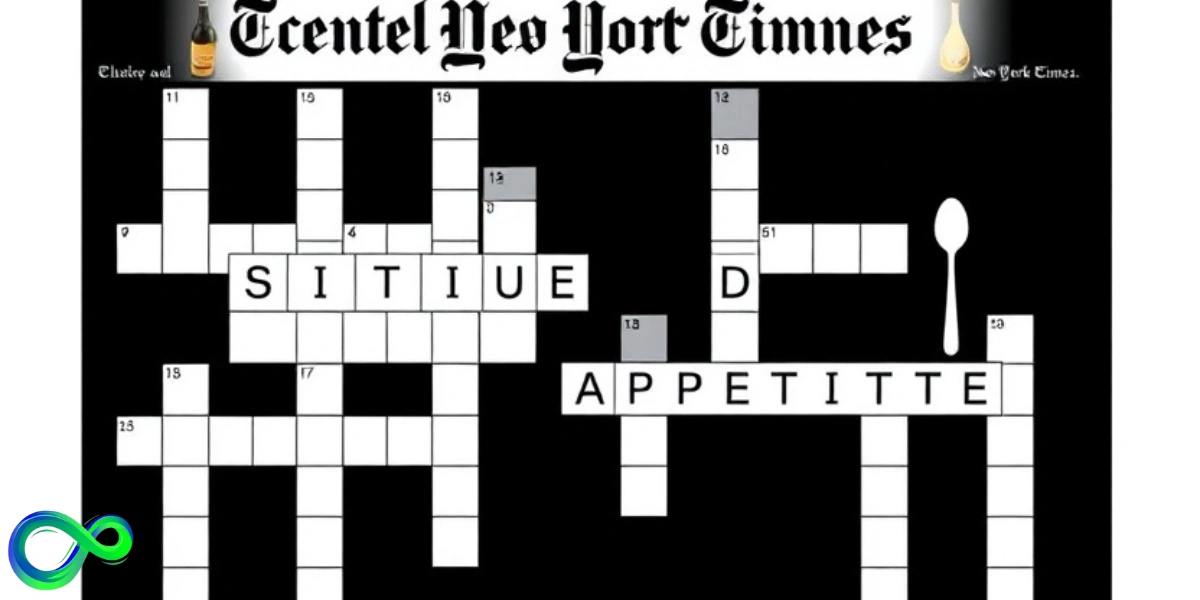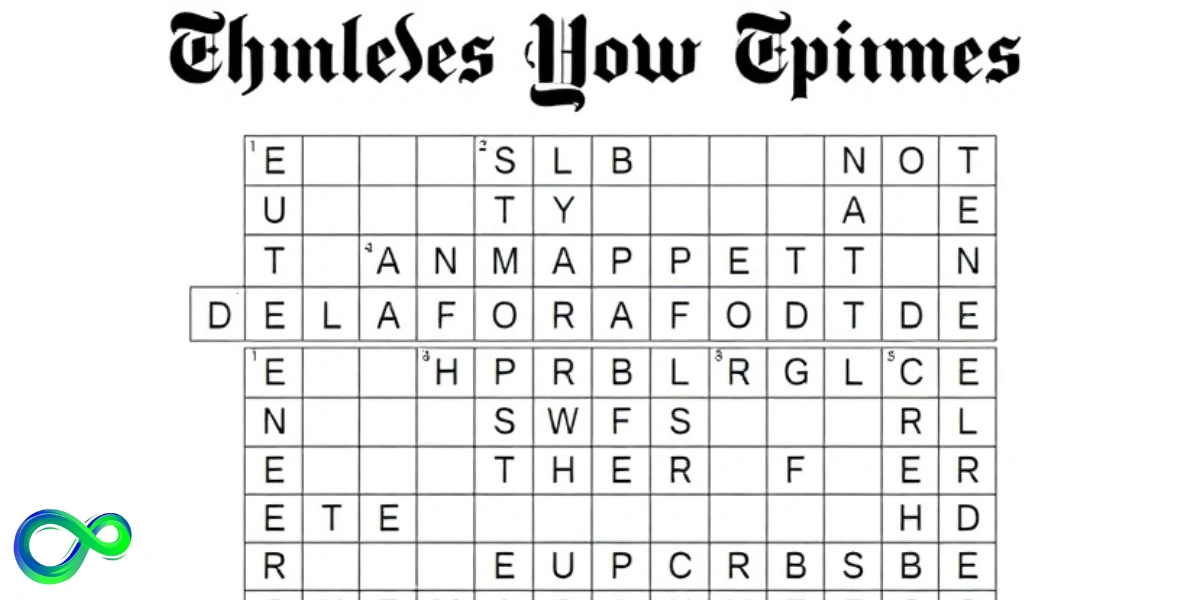Stimulates as an Appetite NYT: Exploring the Clue and Its Implications
Solving the New York Times crossword puzzle every day is as important to many Americans as their first cup of coffee. “Stimulates as an appetite NYT” is one of the many creative clues that adorn these grids, and it is a very captivating and recurrent puzzle component.
This deceptively straightforward phrase unlocks a realm of linguistic, psychological, and culinary study that extends well beyond the crossword grid. We’ll explore the complex details of this well-known clue in an in-depth exploration of the worlds of crossword puzzles and appetite stimulation.
We will examine how this word challenges problem solvers and reflects a broader social concept of hunger and food, from its ramifications in the field of nutrition and eating disorders to its astute use in the craft of puzzle design.
This post promises to pique your interest in the relationship between wordplay and appetite, regardless of your level of experience with cruciverbalists.
So gather your favorite appetizer, take a seat, and let’s start this delicious exploration of the intersection of culinary science and crossword puzzles.
Also read:
The Role of Stimulates in Appetite

“Stimulates as an appetite” is the expression The term “NYT” describes elements or compounds that increase or stimulate hunger. A prominent issue in medical and culinary discourse, appetite can be stimulated by a variety of drugs or conditions.
Gaining knowledge about what piques one’s hunger can help one make better lifestyle, psychological, and nutritional decisions.
Possible Answers to the Clue
When faced with the clue “stimulates as an appetite NYT,” one may think of many possible responses. Standard solutions could include terms like ‘appetizer,’ frequently used to pique appetite, or ‘food,’ which naturally piques appetite.
A different facet of how hunger might be influenced or boosted is shown in each of these responses.
The Significance of Appetite Stimulation
The idea of increasing appetite is important for a number of reasons. For those with eating disorders or other illnesses that impair their capacity to ingest enough nutrients, appetite stimulation can be extremely important in clinical settings. Knowing what piques people’s appetites can help cooks create more enticing and fulfilling dishes.
Solving the Crossword Clue
The length of the response and how well it fits within the puzzle’s grid are crucial factors to take into account when solving the clue “stimulates as an appetite NYT.” Synonyms and similar terms that meet the clue and the puzzle’s limitations must be taken into account by crossword solvers. This calls for a blend of knowledge, intuition, and problem-solving abilities.
Exploring Appetite-Stimulating Factors in Crossword Clues
The crossword clue “stimulates as an appetite NYT” frequently shows up in puzzles that test the solver’s comprehension of how particular elements can either increase or decrease hunger. Because it deals with a simple yet intricate idea, this clue can be interpreted in several ways.
The literal meaning of appetite stimulation and how it can be portrayed in various terms and phrases are important considerations for solutions when the clue “stimulates as an appetite NYT” arises. Finding the right answer requires making connections between these concepts within the puzzle’s context.
The Fascinating World of Appetite Stimulation
Defining Appetite and Its Role in Human Biology
A growling stomach or a desire for your favorite snack are only two aspects of appetite. It is an intricate biological process that is essential to our existence and health. Fundamentally, appetite is the want to eat, which is triggered by a mix of psychological and physiological variables.
From the point of view of biology, a complex interaction between hormone signals and brain circuits controls appetite. The following are important members of this hormonal orchestra:
- Ghrelin: Often referred to as the “hunger hormone,” it makes people more hungry.
- Leptin: The “satiety hormone,” which inhibits appetite.
- Insulin: controls blood sugar and affects hunger.
- Peptide YY: released to encourage feelings of fullness after eating
The brain’s hypothalamus, which serves as the primary regulator of appetite and satiety, coordinates with these hormones. This complex mechanism makes sure that our bodies get the nutrients they need and maintain energy balance.
The Science Behind Hunger and Cravings
Although they are related to appetite, hunger, and cravings are two different things that complicate our eating habits. A natural urge for eating, hunger is usually brought on by an empty stomach or low blood sugar levels. In contrast, cravings are strong urges for particular foods that are frequently triggered by emotional or psychological factors.
Numerous factors have been found to influence cravings, including:
- Sensory experiences: Cravings can be triggered by the sight, smell, or concept of food.
- Emotional states: Certain food cravings might be brought on by stress, boredom, or happiness.
- Nutritional deficiencies: The body may yearn for foods high in nutrients that it is deficient in.
- Cultural and social influences: Cravings can be shaped by learned associations and behaviors.
Understanding these mechanisms is essential for regulating our personal dietary and lifestyle choices in addition to completing crossword puzzles.
Cultural Perspectives on Appetite in the USA
Over time, opinions regarding eating and hunger have changed dramatically in the United States. The complicated relationship between appetite and American food culture is seen in everything from the abundance-focused post-war era to the present health-conscious environment.
This cultural background ultimately permeates the crossword puzzle industry, impacting both the formulation of clues and the interpretations of solvers. This constant interest in food and the things that make us want to eat is reflected in the clue “stimulates as an appetite NYT.”
Decoding “Stimulates as an Appetite NYT”: A Crossword Detective’s Guide

Common Answers and Their Meanings
In crossword puzzles, the clue “stimulates as an appetite NYT” frequently leads to many possible solutions. These all represent various facets of appetite stimulation:
- Whet: People often use this verb, meaning to sharpen or stimulate, in the phrase ‘whet one’s appetite.
- Pique: Although people frequently link the word to curiosity, they can also use it to mean arousing interest or hunger.
- Arouse: In this usage, it implies to arouse or stimulate appetite, albeit it has various meanings.
- Stir: This flexible verb can describe the act of stimulating or arousing appetite.
These responses highlight the extensive vocabulary related to appetite stimulation, pushing solvers to consider ideas of want and interest that go beyond simple hunger.
How Crossword Constructors Use This Clue?
Crossword creators, the hidden heroes of the puzzle community, use the “stimulates as an appetite NYT” clue with deft accuracy. They frequently employ it as a flexible tool to:
- Play on a word’s numerous meanings to create confusion.
- Incorporate themes related to food into puzzles.
- Connect disparate grid segments using a common thread.
- Provide different levels of difficulty to solvers according to the precise phrase.
Study of a Case: The clue “Stimulates, as an appetite” in a 2019 New York Times crossword puzzle led to the response “WHETS.” The constructor demonstrated this clue’s adaptability by carefully placing it in a corner, which connected a portion with a culinary theme to a more general vocabulary region.
Tips for Solving Appetite-Related Clues
Take into account the following tactics to become proficient with NYT crosswords’ appetite-related clues:
- Think metaphorically: Hunger is not always the same as appetite.
- Consider word length: The number of letters can reduce the amount of potential responses.
- Look for food-related themes: The solution may have more to do with eating if the problem has a gastronomic slant.
- Pay attention to tense and part of speech: Does the hint seek an adjective, verb, or noun?
- Use crossing letters: Important clues may be found in other puzzle answers.
By using these strategies, solvers can easily solve even the most difficult appetite-stimulating hints.
Beyond the Puzzle: Real-World Implications of Appetite Stimulation
Health and Nutrition Considerations
The idea of hunger stimulation has important applications in nutrition and health that go much beyond the crossword puzzle grid. Appetite stimulation is a vital component of maintaining appropriate nutrition for many people, particularly those who are coping with specific medical illnesses or eating disorders.
Appetite stimulation in medical contexts:
- Chemotherapy-treated cancer patients frequently have decreased appetite.
- Loss of appetite is one symptom of HIV/AIDS in people.
- To avoid malnutrition, elderly individuals may require appetite stimulation.
In these situations, medical experts could suggest many methods to increase appetite:
- Medications: It is possible to administer certain medications to stimulate appetite.
- Dietary changes: Adding more enticing foods or modifying meal plans
- Exercise: Exercise naturally increases hunger.
- Psychological interventions: Resolving core mental health conditions that could influence hunger.
Knowing these practical uses deepens our understanding of the crossword problem and serves as a reminder of the critical role appetite plays in general health and well-being.
The Food Industry’s Interest in Appetite Stimulation
The food business is aware of the importance of arousing hunger. Chefs, food producers, and restaurants all actively seek ways to improve the appeal and traceability of their products.
“The eye is the site of the initial bite.” This ancient culinary proverb emphasizes how crucial aesthetic appeal is in sparking desire.
The following are some methods used by the food business to increase appetite:
- Aroma engineering: Making delicious smells to make people hungry.
- Color psychology: Utilizing particular hues in food display and packaging to boost attractiveness.
- Texture manipulation: Creating mouthfeel-pleasing foods to promote regular eating.
- Flavor enhancement: Adding spices, herbs, and other ingredients to enhance flavor
In addition to helping companies increase sales, these tactics also add to the continuing discussion regarding ethical food marketing and its effects on public health.
Ethical Debates Surrounding Appetite Manipulation
There are serious ethical issues with the ability to increase appetite. The argument about how best to apply our growing knowledge of the physiological and psychological aspects of hunger is becoming more heated.
Key ethical questions include:
- Do food businesses have the right to utilize psychological triggers to boost consumption?
- How can we strike a compromise between worries about overeating in the general population and providing appetite stimulation for individuals who require it medically?
- How should the government regulate appetite-stimulating tactics in food marketing?
These queries draw attention to the intricate relationships that exist between personal preference, public health, and corporate accountability. We develop a greater understanding of the depth of meaning contained in the straightforward crossword clue “stimulates as an appetite NYT” as we consider these problems.
By examining these practical effects, we may observe how a single crossword clue can spark a flurry of conversation on ethical issues, industry practices, and health. It serves as a potent reminder of the complexity and significance concealed among the crossword puzzle’s ostensibly straightforward squares.
Modern Twists on an Age-Old Clue

Recent Variations of “Stimulates as an Appetite”
Crossword puzzles and our favorite hunger-stoking clues evolve to reflect contemporary culture. In recent years, a few creative and thought-provoking variations have surfaced:
- “Instagram food pic effect” (Answer: WHET)
- “What ASMR eating videos might do” (Answer: AROUSE)
- “Effect of a well-curated menu” (Answer: PIQUE)
- “Mukbang video’s goal” (Answer: STIMULATE)
These contemporary twists show how crossword puzzles remain relevant in evolving times by incorporating digital-age phenomena like online eating shows, ASMR material, and social media food photography.
How Technology Has Influenced Crossword Clues?
The digital revolution has altered our relationships with food and crossword puzzles. This impact of technology is seen in many ways:
- Online databases: Large word banks are now available to constructors, enabling more inventive and varied cluing.
- Digital solving: Multimedia components in puzzles are now simpler to incorporate thanks to apps and internet platforms, increasing the number of potential hints on appetite.
- Social media: Incorporating popular food subjects into puzzles can keep cues current and interesting.
- AI and machine learning: These technologies are starting to help in the generation of clues, which could result in even more creative wordplay that piques interest.
The Future of Appetite-Related Crossword Puzzles
Looking ahead, we can expect some fascinating changes in the potential evolution of “stimulates as an appetite NYT” and related clues:
- Personalized puzzles: AI might modify cues about appetite according to a solver’s dietary needs or gastronomic tastes.
- Interactive elements: In the future, digital crossword puzzles may include graphics or sounds to improve hints that pique curiosity.
- Cross-cultural clues: You should anticipate seeing a wider variety of appetite-related language as international cuisines gain popularity.
- Health-conscious angles: Clues may increasingly reflect the emphasis on nutrition and careful eating in culture.
From Clue to Solution: A Step-by-Step Guide
Analyzing the Clue Structure
A methodical approach can result in successful problem-solving when confronted with the clue “stimulates as an appetite NYT” or its variations. Let’s dissect the structure of the clue:
- Verb identification: “Stimulates” is the key action word.
- Context clue: “as an appetite” provides the specific context.
- NYT signifier: This indicates the style and difficulty level typical of NYT puzzles.
Comprehending these elements enables solvers to focus on possible solutions and take a more methodical approach to the clue.
Considering Word Length and Intersecting Letters
The answer’s letter count and word intersections are important factors while completing crossword puzzles. For our clue that piques our appetite:
- Common 4-letter answers: WHET, PIQUE
- Common 5-letter answers: AROUSE, EXCITE
- Common 6-letter answers: KINDLE, SHARPEN
Pro Tip: Keep an eye on the clue’s tense. The present tense “stimulates” may produce a different response than the past tense “stimulated.”
Using Context Clues from Surrounding Puzzle Entries
The interconnection of crossword puzzles is what makes them so beautiful. To answer riddles about appetite, surrounding entries can offer important context:
- Theme awareness: The answer is more likely to have a direct connection to eating if the problem includes a food or dining theme.
- Letter intersections: Crossing words by just one or two letters may greatly decrease the number of options.
- Difficulty consistency: The intricacy of the surrounding clues can give an indication of how challenging the upcoming clue may be, as NYT puzzles often keep a constant degree of difficulty throughout.
By using these techniques, solvers may confidently tackle hints like “stimulates as an appetite NYT” and others, transforming a possible roadblock into a rewarding solution.
Conclusion: Stimulates as an Appetite NYT
the intriguing New York Times crossword clue “stimulates as an appetite,” highlighting its role in both wordplay and cultural discourse. This clue not only challenges puzzle solvers but also sheds light on the complex science of appetite stimulation, which involves hormones like ghrelin and leptin.
The article explains how various factors—biological, psychological, and cultural—influence appetite.. It also touches on the food industry’s techniques for enhancing appeal and the ethical considerations of manipulating appetite.
Ultimately, the piece illustrates how a simple crossword clue can spark broader discussions on health, industry practices, and social dynamics.
FAQs: Stimulates as an Appetite NYT
Check out our FAQs for Stimulates as an Appetite NYT. If you have additional questions or need assistance, don’t hesitate to contact us through our Contact Us page.











